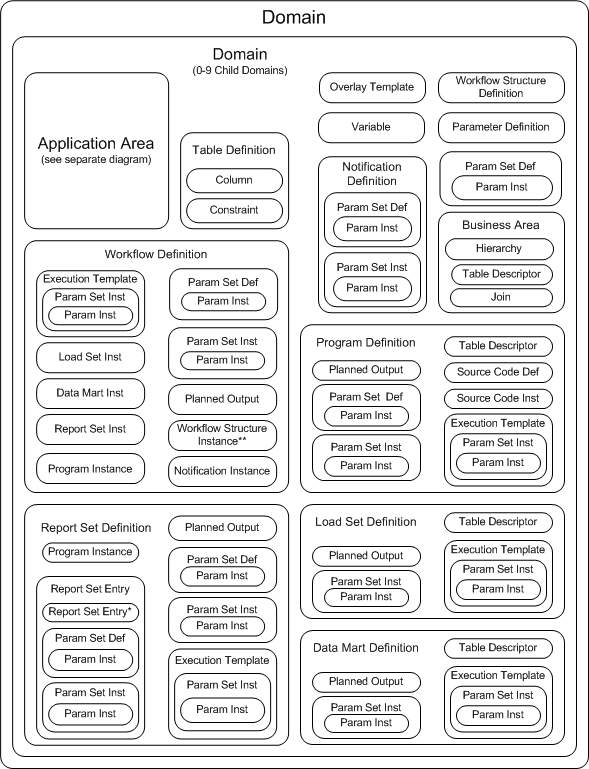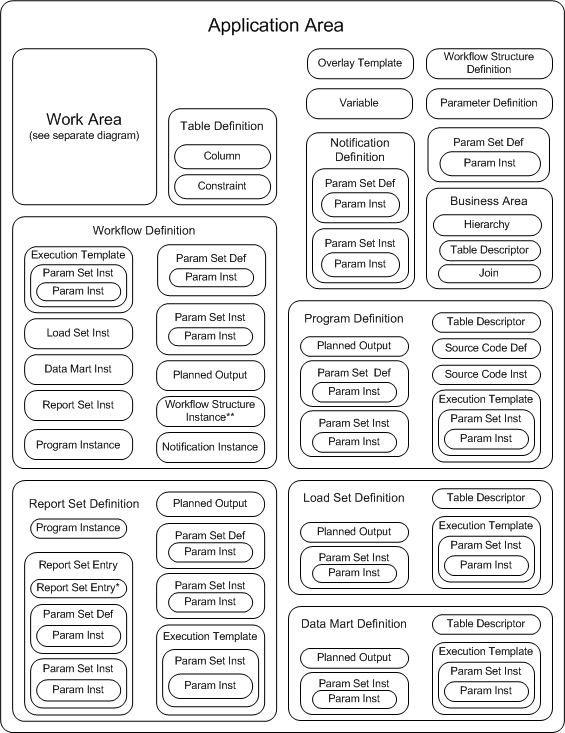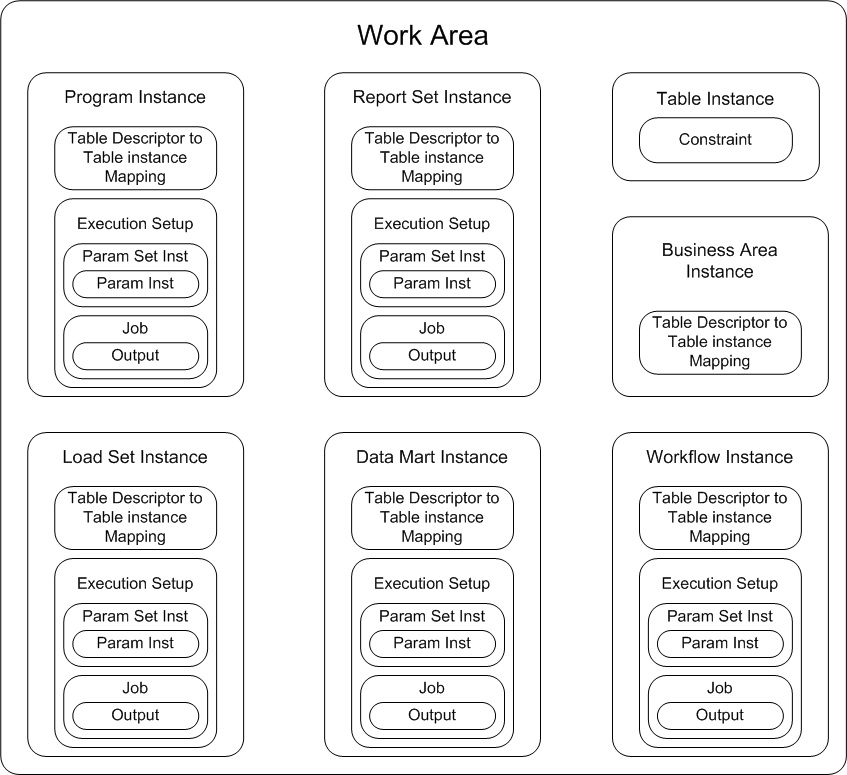| Oracle® Life Sciences Data Hub Implementation Guide Release 2.4 E54088-01 |
|
|
PDF · Mobi · ePub |
| Oracle® Life Sciences Data Hub Implementation Guide Release 2.4 E54088-01 |
|
|
PDF · Mobi · ePub |
In the Oracle Life Sciences Data Hub (Oracle LSH), object definitions and instances are "owned" by their immediate container object. The following diagrams show the Oracle LSH data model for object ownership:
Object ownership has ramifications in many areas of Oracle LSH, including security (user group assignments) and classification; it is possible for objects to inherit the user group assignments and classifications of their owning objects. In addition, Oracle LSH enforces unique names for objects of the same type in the same container object.
Domains contain Application Areas and object definitions. Object definitions contained directly in a Domain constitute the Domain library.
Figure B-1 shows all layers of object ownership within a Domain, except for objects contained in the Application Area. See Figure B-2 for object ownership within an Application Area.
Note:
Report Set Entries inside Report Set Definitions can be nested indefinitely.Figure B-1 Object Ownership within a Domain

Application Areas contain exactly the same objects as Domains, except that Domains contain Application Areas and Application Areas contain Work Areas. Both Domains and Application Areas can include all object definition types. Figure B-2 shows all possible layers of object ownership within an Application Area.
Note:
Report Set Entries inside Report Set Definitions can be nested indefinitely.Figure B-2 Object Ownership within an Application Area

Work Areas contain object instances, each of which points to an object definition located either in an Application Area or in a Library. This diagram shows only object ownership, so you cannot see the pointers to the definitions. Most object instances point to an object definition with the same type name; for example, Program instances point to Program definitions. There are two exceptions: both a Parameter and a Table Column point to a Variable as their definition source. Figure B-3 shows all possible layers of object ownership within an Application Area.
Figure B-3 Object Ownership within a Work Area
